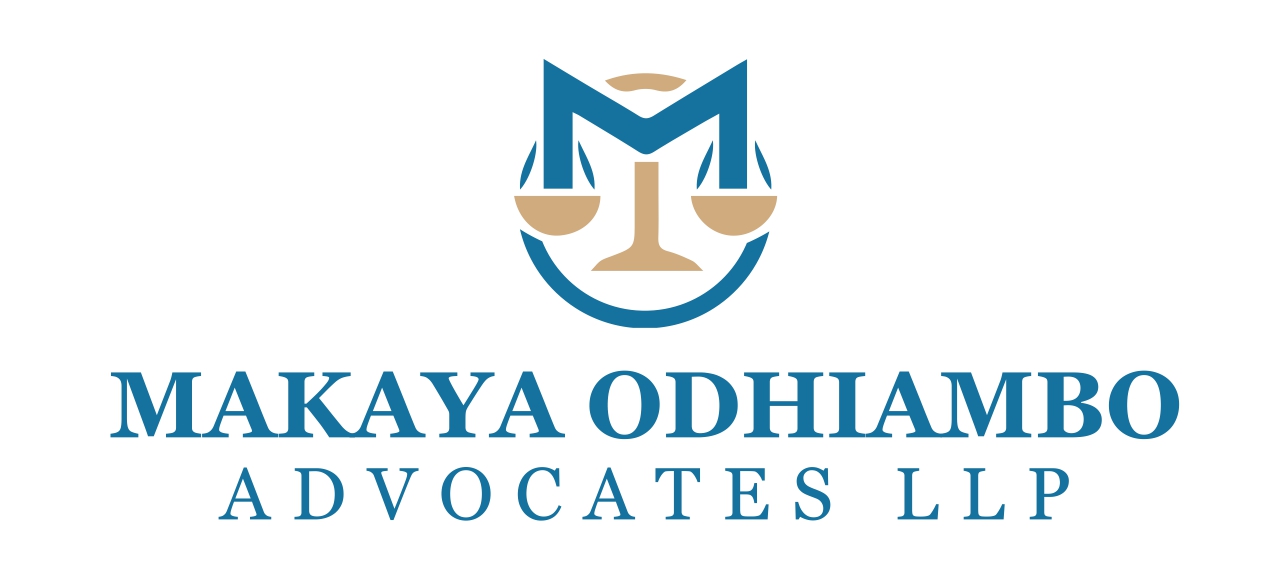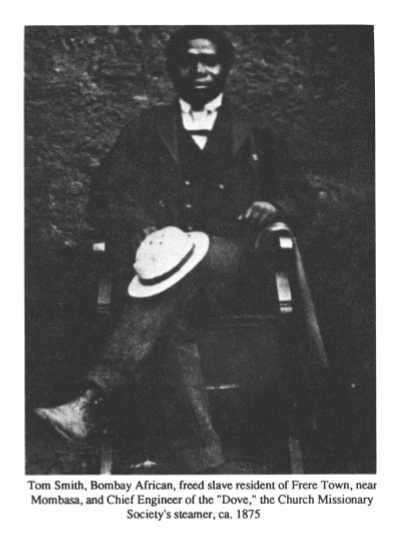‘Bombay Africans’ was a name given to former slaves rescued from slave ships on the Indian Ocean by the Royal Navy. They were placed in Christian Missionary Society (CMS) ‘orphanages’ in Bombay, India. There they were taught skills like mapping, carpentry and building. In the years around 1874, CMS decided to set up settlements for freed slaves, notably in Rabai and Frere Town. In this they planned to involve the former slaves settled in Bombay, to assist in teaching and artisan work. They raised funds for this from their supporters in Britain.
Like in British society, there was a hierarchical structure among the Bombay Africans. At the helm were African ‘leaders’, 3 of whom had arrived years before the Frere Town building plans and helped the missionaries as navigators. Those were William Jones, Ishmael Semler and George David. The others in leadership were Isaac Nyondo (a local in Rabai considered the first Kenyan teacher of African origin, by ‘modern’ education standards, Jacob Wainwright and Tom Smith. Tom Smith later took a role as the Chief Engineer of ‘The Dove’, CMS’s Steamer. The African leadership mainly constituted the Bombay Africans proficient in reading and writing. They led the way as teachers in the new settlements. Below them in class were the artisans (carpenters and builders). The lowest class belonged to the newly liberated slaves.
CMS chose the Bombay Africans as teachers because they would be role models for the African pupils. An example of “what some of the black race can become. They are trustworthy, sensible men, who speak 5 or 6 languages and are anxious for the welfare of their country”. It’s noteworthy that not all white missionaries welcomed the idea of having Bombay Africans as counterparts and cases of racism were reported. If not for Rev. William Salter Price who arrived at the Coast in 1874, the ‘project’ could have maybe been abandoned. Rev. Price personally trained some of the Bombay Africans back in India and vouched for their competence & artisan skills.
He recommended the dismissal of one missionary, a Mr. Sparshott, who had nothing good to say about Africans. Mr. Sparshott was recalled to Britain. Sparshott’s racism had peaked even before 1874 and is well captured by a letter to him by a fellow missionary, Mr. Chancellor. “Your treatment of the Bombay Africans opened my eyes. Several times you said you would pack them all off to Bombay and that they are not worth their salt, an independent, idle lot. Even lately, I have been asked if you intend to carry out your threat. Time after time they have been to me with complaints of your hard treatment and once I was told, “I believe Mr. Sparshott hates us from the bottom of his heart”…”, Mr. Chancellor.
The Bombay Africans’ influence was greater in Frere Town than in Rabai. Rabai was an existing community with Mijikenda villages all around. Frere Town was built almost from scratch, with houses, the Church and school ‘geometrically’ planned and structured. Aside from teaching and artisan work, the legacy of the Bombay Africans is in their role in promoting the abolition of slave trade. The ones proficient in reading and writing wrote leaflets both in English and Kiswahili spreading the message of abolition across the East African Coast.
Of great help to this article: ‘Children of Ham; Freed Slaves and Fugitive Slaves on the Kenyan Coast, 1873-1907’ by Fred Morton. ‘Pastors, Partners and Paternalists; African Church Leaders and Western Missionaries in the Anglican Church of Kenya’ by Reed.
SUPPORT: We are a non-funded entity kept alive solely by our readers’ thirst for the undocumented and not adequately documented aspects of our past. The logistics of getting these stories can sometimes be a challenge. We would appreciate your support. To support Pwani Tribune’s history and culture research plus content creation…M-PESA till number: 8627478 Contact: +254726860693



